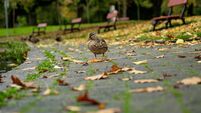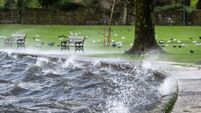74,000 homes, schools, and businesses still without power in the wake of Storm Éowyn

Workers clearing a fallen tree as ESB Networks continue to reconnect homes and businesses. across the country in the wake of Storm Éowyn.
More than 74,000 homes, schools, and businesses remain without supply while around 800 have no water and about 5% of mobile phone users are still impacted by Storm Éowyn.
As well as the work of more than 2,300 ESB Networks crews, power and water plants restoration has been made possible thanks to technicians and a large number of extra generators flown in from aboard.
Check out the Irish Examiner's WEATHER CENTRE for regularly updated short and long range forecasts wherever you are.













